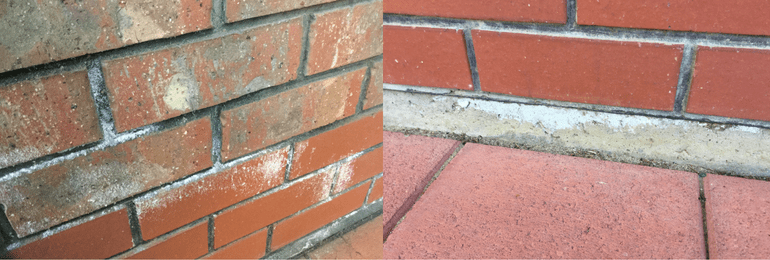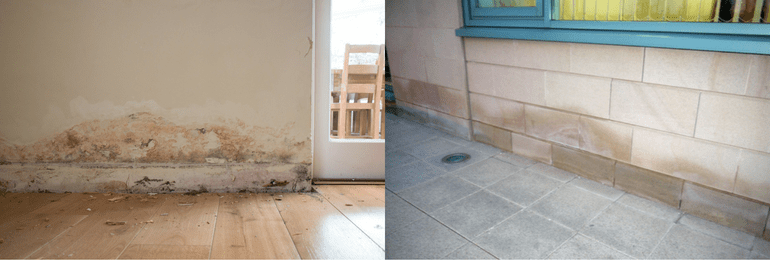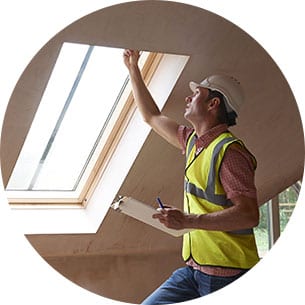
Everybody knows that you don’t want dampness in a building. It’s not good for the foundations, the structure or any of the inside furnishings.
However do you know about the different types of dampness and what causes them? It’s useful to have a bit of an understanding about why dampness occurs and the sort of problems it can cause.
What Is Rising Dampness?
Many building inspectors in Adelaide identify Rising Dampness and sometimes called Salt Damp. Unlike common damp (which is caused by condensation), rising damp is actually caused by a vertical flow of water through a permeable wall structure. The water comes from the ground and rises through the pores in masonry through a process that’s known as “capillarity”.
Usually occurring below heights of 1.5 metres, rising damp can actually be made worse by cleaning of the surface, replastering or repainting.
When the dampness evaporates from the wall it leaves deposits of salts in the plasterwork. These are nitrates and sulphates which can build up. When the deposits build up, their capacity to absorb moisture from the air increases and the situation worsens.
Why Is Rising Dampness A Problem?
Not only is Rising Damp unattractive to look at, it can have far more serious unseen effects on buildings – including seriously affecting the structure of walls.
- Rising Damp can lead to dry rot, wet rot, weevils and wood worm
- Inorganic materials can lose their structural strength causing issues with floors and walls
- Mould Growth can create health hazards
- Serious Rising Dampness can create issues that cause respiratory problems with prolonged exposure.

Want To Avoid Rising Dampness In Your Home?
There are different methods to treating Rising Damp and the right one for you may depend on the extent to which the issue has developed.
Always seek expert advice to ensure you are treating you will use the best method to treat the root of the problem and that it will not happen again. Many companies will be able to use electronic moisture meters to figure out exactly where and to what extent the issues lie.
-
Undersetting
This method requires the removal and replacement of old bricks and stones. A new plastic damp course is put underneath the new ones – this is called undersetting.
Although undersetting can solve the problem long term, it is also quite costly, messy and can affect the structural stability of a building.
-
Chemical Damp Course
If you have had a damp proof course before, you’ll now want to consider placing a chemical damp course at the lowest point of the wall. This will help to create a barrier to prevent any rising water from entering the wall.
On many occasions, the exact issue for the Rising Damp is hard to identify with the naked eye. It is one of those below surface level problems that in most cases will require a professional.
Get a free building inspection quote or Call Daniel on 0478 778 899




